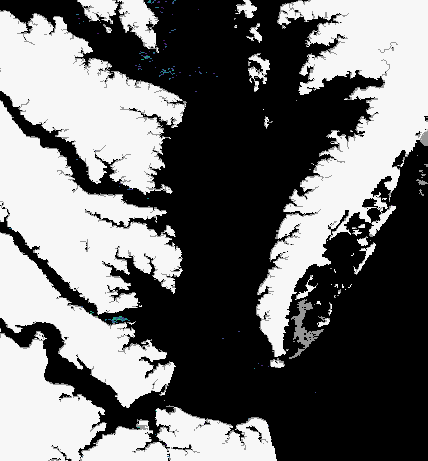Chesapeake Bay Harmful Algal Bloom Forecast System
NOAA is providing forecasts in Chesapeake Bay for harmful algal blooms (HABs) of the dinoflagellate Margalefidinium polykrikoides, often known as rust tide, which typically blooms from late July to October. Blooms have been observed annually in the York River since 2007, and in more recent years in the lower Bay’s mainstem and in the James, Elizabeth and Lafayette Rivers. These blooms are a concern due to their impact on water quality and toxicity to finfish and shellfish. A demonstration forecast is currently being run for the York River, VA and will be expanded to other regions of the Bay pending validation efforts. A combination of satellite imagery (showing bloom location and extent) and a coupled bio-physical model provides information on the current status of the bloom and forecasted position at both surface and at depth over the next 6 days. See individual products and our FAQs for more information.
Forecast Products
Welcome to the new home of the Chesapeake Bay Harmful Algal Bloom Forecast System. No bloom of M. polykrikoides is observed at this time. 2025-06-05 ##--NCCOS HAB Forecasting Team
The Chesapeake Bay Harmful Algal Bloom Forecast is operated by the National Centers for Coastal Ocean Science.
Contact hab@noaa.gov for technical questions. Last Updated: 2025-07-01 11:43 EST

Forecasted Bloom Position
(from modelling)
Forecasted extent and position of the bloom for a minimum of 96 hours, based on a combination of a hydrodynamic modeled currents and satellite imagery for initial bloom location.

Observed Bloom Position
(from most recent satellite image)
Current satellite imagery from the Ocean Land Color Imager (OLCI) and true color imagery showing bloom location and extent.
More Information:
Background Information on M. polykrikoides:
- More information about M. polykrikoides blooms (VIMS)
- Previous work modeling M. polykrikoides (formally called Cochlodinium polykrikoides) and A. catenella blooms in the lower Chesapeake Bay (NCCOS ECOHAB)
- Report a HAB in the lower Chesapeake Bay (VA Department of Health)
